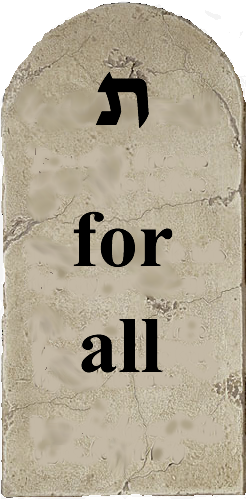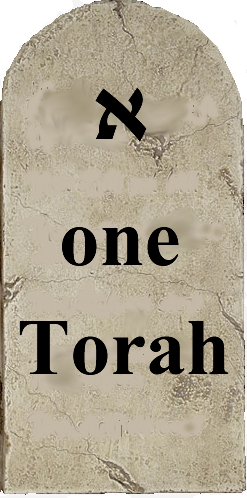Something Hidden - Revealed
A Lesson from the Jots and Tittles – part 3
Yochanan (John) 1:32
And Yochanan (John) bore witness, saying, “I have beheld the Spirit descending as a dove out of heaven; and it abode upon him.”
This lesson from the jots and tittles comes from the parasha Pinchas. Each one of the following jots is found in that weekly portion. The account detailed within this portion of Scripture is also reflected within these jots, namely, overcoming the mire of sin.
B’midbar (Numbers) 25:11
“Pinchas, the son of Eleazar, the son of Aharon the priest, has turned My wrath away from the children of Israel, in that he was jealous with My jealousy among them, so that I consumed not the children of Israel in My jealousy.”
B’midbar 25:11 small י
In part two of this series, this jot was part of that lesson concerning all the jots which were reduced in size in the Torah Moshe. However, placing this reduced י (yod) together with the other jots found within this same parasha, places a different emphasis upon it.
What comes to mind here is the relationship between two of the manifestations of Elohim, namely, the Father and the Son. Since both the Father and the Son share the same name YHWH, with the first letter being a י (yod), a reduced י (yod) suggests the Son, in particular. Keep this in mind as we proceed, as it will become clearer further into this study.
The word associated with the י (yod) is “hand.” The significance of this comes into the light as we consider the word associated with the next jot and the word associated with it.
B’midbar (Numbers) 25:12
“Wherefore say, ‘Behold, I give unto him My covenant of peace.’”
B’midbar 25:12 split ו
Here we have a ו (waw) and the word associated with it is “nail.” We know that the Son was nailed to an execution stake. However, in this case, the ו (waw) is broken, signifying that the nails would not be able to hold Him in death, but that He would rise again.
If the reader has read parts one and two of this series, then he recognizes that these first two jots in this study have been used before to teach other things. As is typical of the style of YHWH in teaching His people His ways, what He says often has multiple meanings. Such is the case with the jots and tittles. How one groups them, and there are multiple ways to do that, will determine what any given jot is teaching in that instance.
B’midbar (Numbers) 26:1
And it came to pass after the plague, that YHWH spoke unto Moshe and unto Eleazar the son of Aharon the priest, saying,
B’midbar 26:1 gap 
In the Hebrew language, quite often a teacher will group significant letters together to make an anagram. This anagram is often indicated as יו״נ as we find with these three jots in this Torah portion. It is interesting to note that, where the gershayim (looks like a quotation mark) is placed in the aforementioned anagram is an unexpected space in the Torah scroll, namely, between the occurrence of the ו (waw) and the נ (nun). It is as if YHWH wanted His people to consider these three jots in particular together as a special lesson. In this case, these three letters form the Hebrew word יון (yaven), which means “mire” or “mud.” Mire represents being stuck in sin. Please keep this in mind, as we shall return to it shortly.
In the context of this verse, the opening mentions the plague just brought to an end by Pinchas as an introduction to what is now being commanded, namely, a census is to be taken. Please consider this passage of how YHWH commands His people to take a census.
Shemot (Exodus) 30:11-16
11 And YHWH spoke unto Moshe, saying,
12 “When you take the sum of the children of Israel, according to those that are numbered of them, then shall they give every man a ransom for his soul unto YHWH, when you number them; that there be no plague among them, when you number them.
13 This they shall give, every one that passes over unto them that are numbered, half a shekel after the shekel of the sanctuary (the shekel is twenty gerahs), half a shekel for an offering to YHWH.
14 Every one that passes over unto them that are numbered, from twenty years old and upward, shall give the offering of YHWH.
15 The rich shall not give more, and the poor shall not give less, than the half shekel, when they give the offering of YHWH, to make atonement for your souls.
16 And you shall take the atonement money from the children of Israel, and shall appoint it for the service of the tent of meeting; that it may be a memorial for the children of Israel before YHWH, to make atonement for your souls.”
In Shemot (Exodus) 30:11-16, YHWH commands that, when a census is taken, each person counted must give an atonement of one half shekel; otherwise, a plague shall ensue. Thus, this gap in the Torah scroll is also a reminder that there is a proper way to separate a plague from the people of Israel when a census is taken. This gap then points back at the previous plague and also looks forward to preventing an immediate second plague as a result of the census which YHWH commanded to be taken.
B’midbar (Numbers) 27:5
And Moshe brought their cause before YHWH.
B’midbar 27:5 enlarged ן
The final jot in this parasha is an enlarged ן (nun). One of the words associated with נ (nun) is “increase.” This jot is increased in size; thus, it brings to mind the following passage.
Hoshea 1:10
Yet the number of the children of Israel shall be as the sand of the sea, which cannot be measured nor numbered; and it shall come to pass that, in the place where it was said unto them, “You are not My people,” it shall be said unto them, “You are the sons of El Chay.”
The northern kingdom of Israel, which consisted of ten tribes, was divorced from YHWH because of their sins and then scattered throughout all the nations of the world. One of the purposes of the Son coming, was to offer a means by which those who had been previously separated from the love of Elohim, could return to Him and His family.
Thus, we have pictured in the jots of this parasha, the Son with a nail placed through His hand. This is followed by the enlarged ן (nun) which is separated from the nail in the hand. This separation is further intensified by the mire, symbolized by the jots which form יון (yaven), which enlarged Ephrayim in particular tends to get caught in quite frequently. Therefore, the Father and the Son needed to provide a means by which the return of enlarged Israel can return back to the house of Elohim.
Ma’aseh (Acts) 1:5
“for Yochanan indeed baptized with water; but you shall be baptized in the Holy Spirit not many days hence.”
The Hebrew character ה (hey) is representative of the Ruach Qodesh (Holy Spirit). By adding the ה (hey) to the end of this word, one now has the Hebrew word יונה (yonah), which means “dove.” The dove is a symbol of the Ruach Qodesh (Holy Spirit) as seen in the following passage of Scripture.
Luqa (Luke) 3:22
and the Holy Spirit descended in a bodily form, as a dove, upon him, and a Voice came out of heaven, “You are My beloved Son; in you I am well pleased.”
Only by a person being filled with His Spirit and listening to His Voice can one stay out of the mire. Conversely, when one does not listen to His Voice through the ministry of His Spirit, what one will find himself in almost immediately is the mire, which is not a fun place to struggle through.
Shabbat Shalom
Zerubbabel ben Emunah
www.onetorahforall.com

